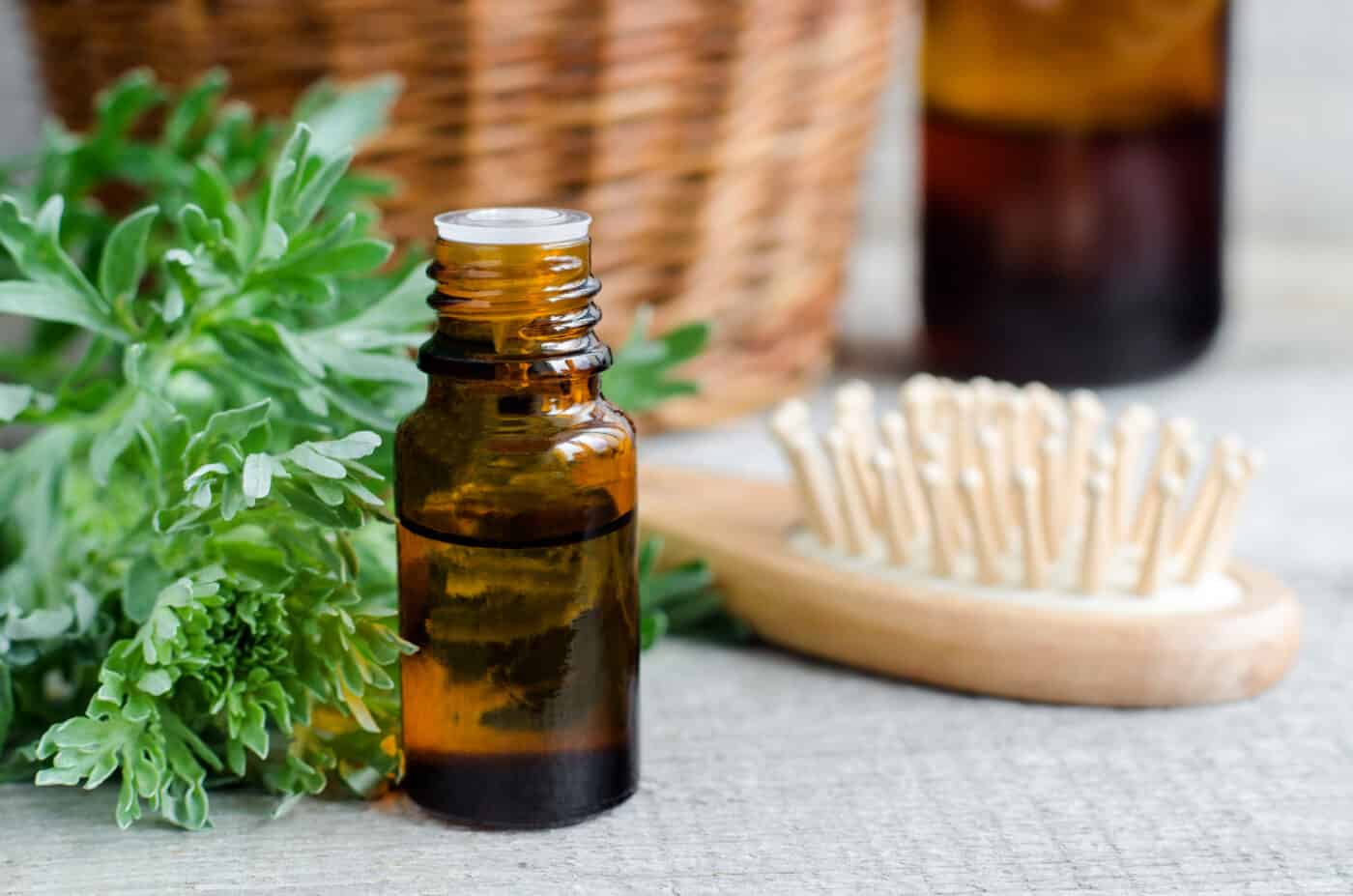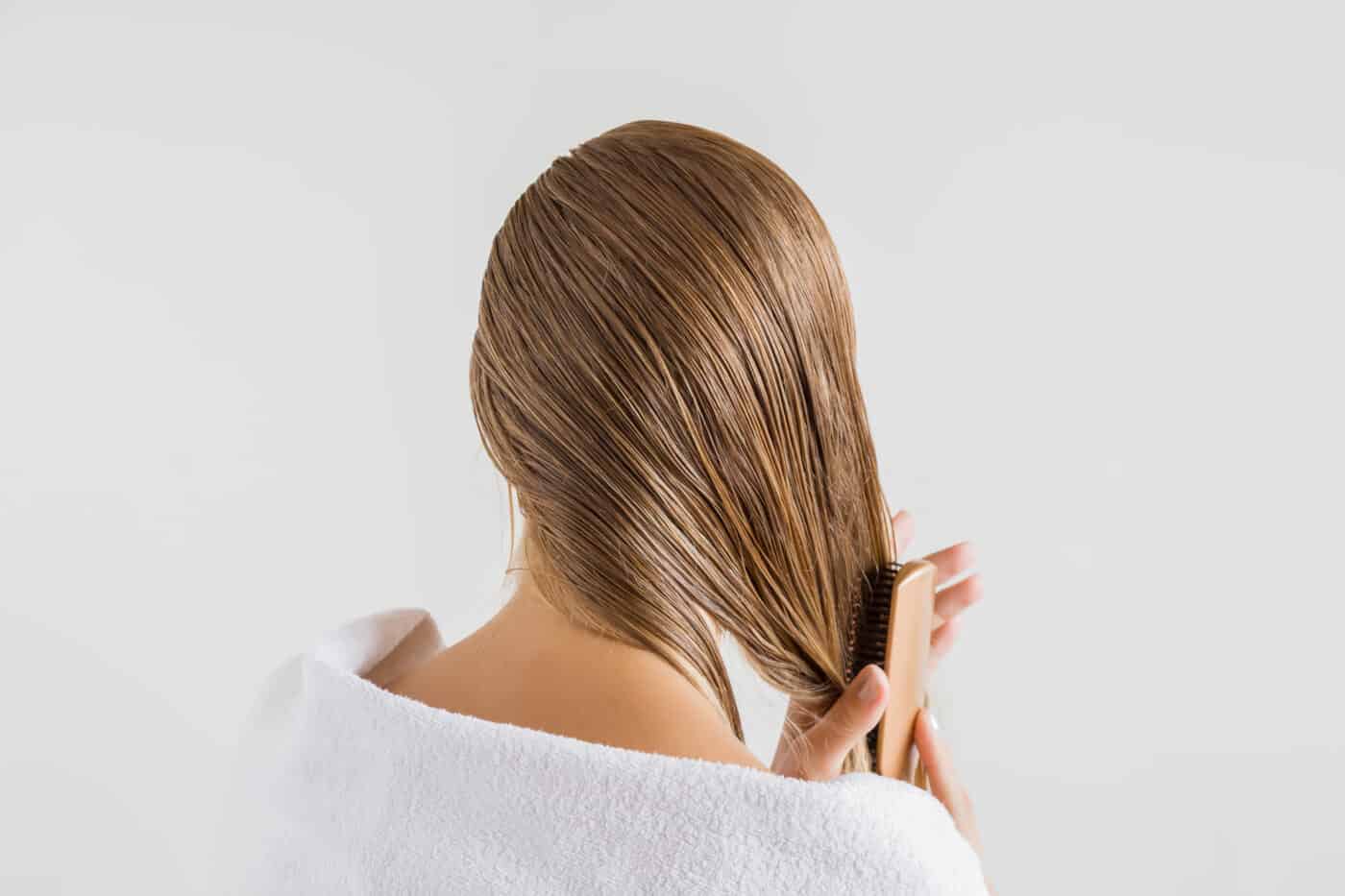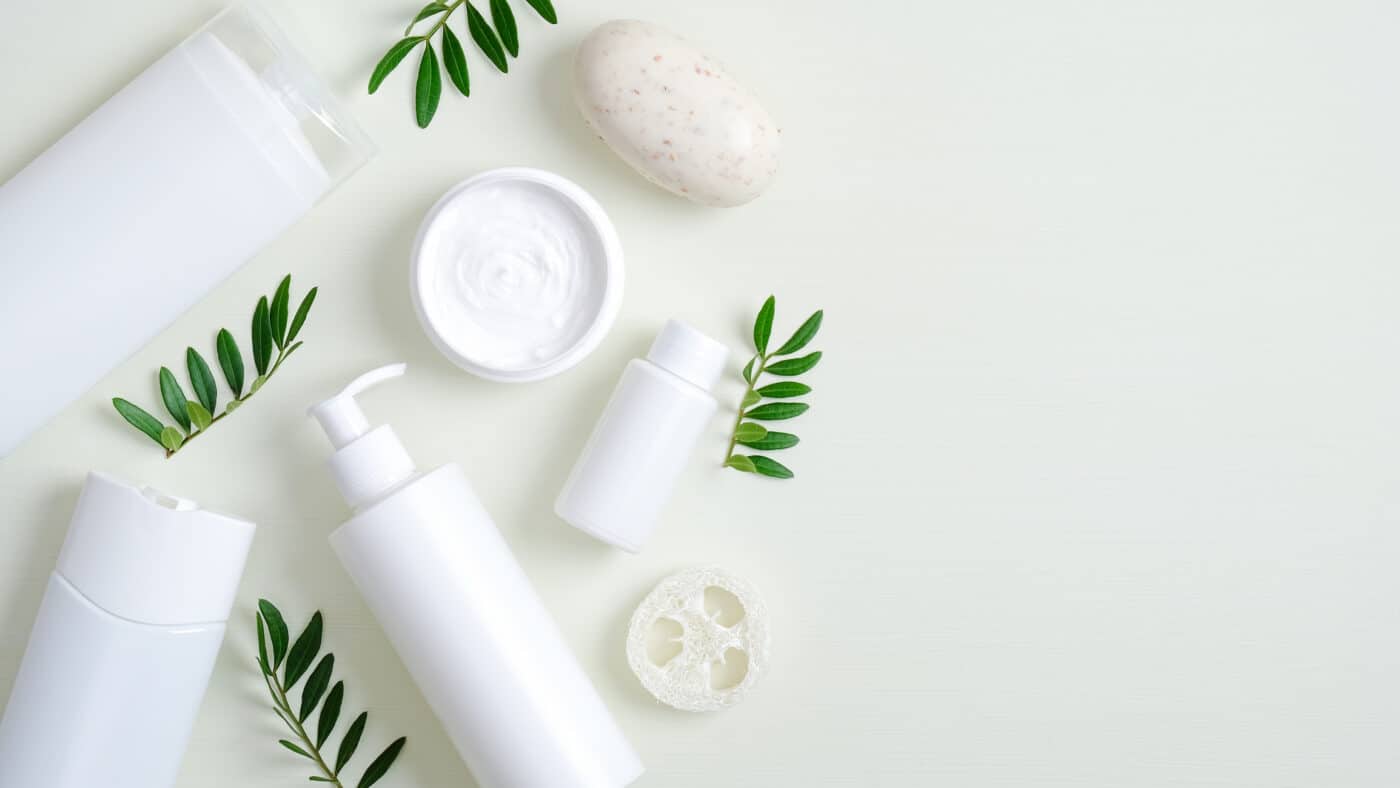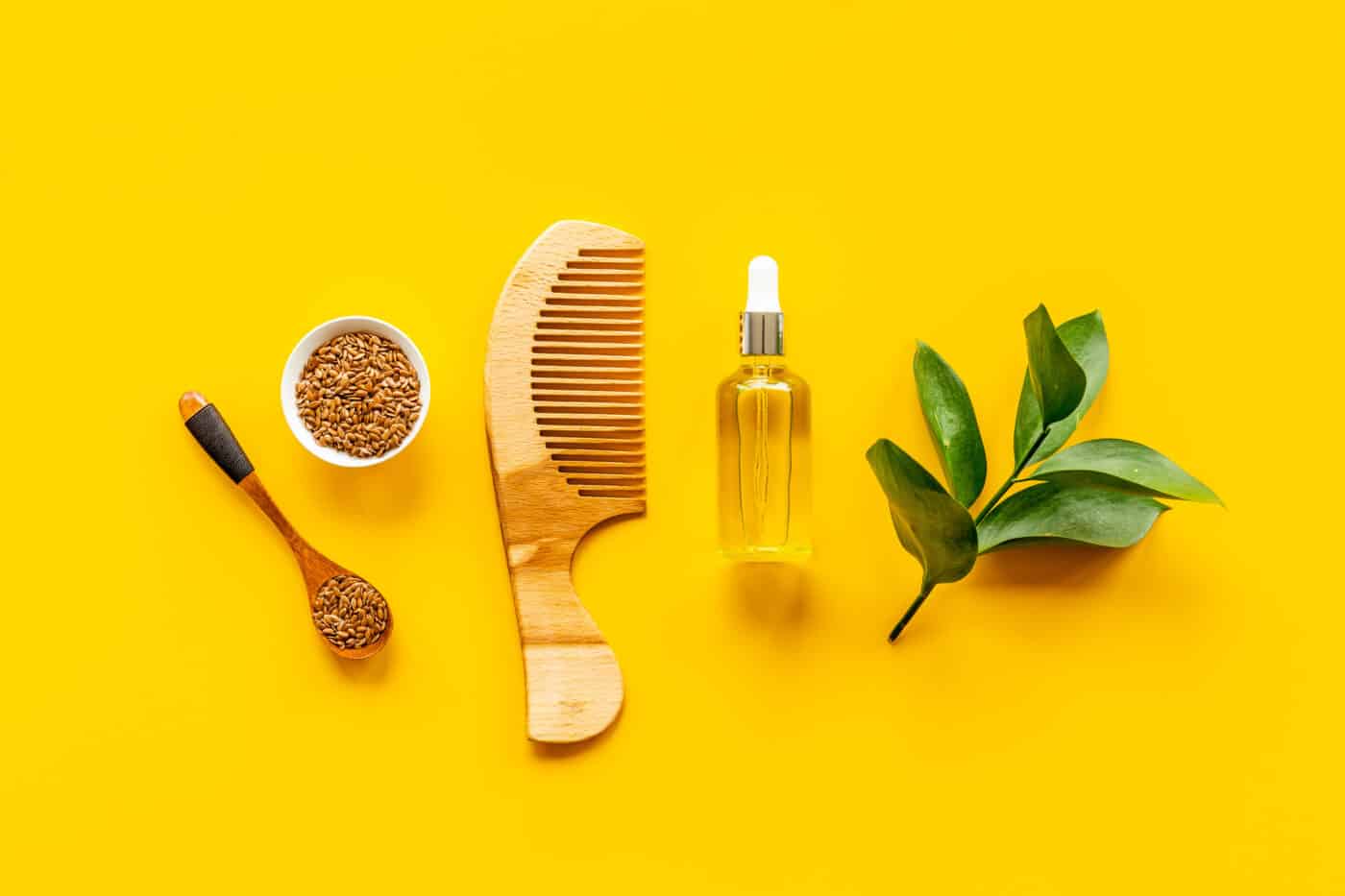Oil vs cream for hair – which is best? Both products are hotly debated for their moisturizing, styling, and de-frizz properties but how do they compare in terms of ingredients, results, cost, and other factors? Let’s find out.

Hair creams tend to be better suited to styling hair and holding it with a lightweight quality, whereas oils are better suited to conditioning, repairing, and protecting hair from damage. However, both products have comparable benefits and uses, which we’ll explain in depth below.
Oil vs Cream Hair Products
When you think of hair creams, think of products like hair wax, pomade, and styling gel, but then imagine a lightweight version of them.
Hair cream is ideal if you want to hold your curls or hair part in place for long periods of time, without ending up with a stiff or crunchy look that you get from, say, hair gel.
On the other hand, hair oil, while acceptable to use for hair styling, is more beneficial when used as a treatment, like hot oil treatments.
Hair oil treatments help to nourish and moisturize dry, damaged, and broken hair, whether that’s due to chemical damage, heat damage, or something else.
Below, we’ll compare and contrast the following factors related to each type of hair care product:
- Key ingredients
- Product results
- How to use
- Benefits
- Downsides
- Cost
- Best brands/products
The Ingredients in Oil vs Cream Hair Products

One of the key differences between ingredients is how much oil is used in the product.
Obviously, hair oil is going to contain more oil, whereas hair cream contains some essential and plant-based oils in combination with other important ingredients.
Hair Oil
Hair oils are derived from different sources in order to have different effects, such as the following:
- Almond oil – protects hair from breakage and moisturizes, adding nutrients like Vitamin E, fatty acids, and phytosterols
- Argan oil – rich in fatty acids, Vitamin E, and good for skin/scalp health to promote healthy hair growth
- Shea butter – softens and moisturizes dry hair without weighing it down with grease, rich in fatty acids and vitamins
- Jojoba oil – hydrates and strengthens hair with B vitamins and Vitamin E
- Olive oil – moisturizes hair and protects the keratin protein with fatty acids and
- Coconut oil – great conditioning properties for extra dry or brittle hair, higher in saturated fats
Hair Cream
Hair cream contains some natural and plant-based oils, but it’s made up of other ingredients, including:
- Glycerin (moisturizes hair and protects against breakage and damage)
- Mineral oils (a form of processed petroleum)
- Water
- Fatty alcohols like Cetearyl alcohol
- Dimethicone (silicone that detangles hair and binds the cuticles to protect)
- Lanolin (a waxy substance from sheep wool that moisturizes hair and skin)
Hair cream’s primary ingredient that distinguishes it from hair oil is glycerin. It also contains more water, making it less oily overall and lighter on hair.
And you’ll find silicone ingredients in hair creams, along with certain binding ingredients.
Product Results for Oil vs Cream

Hair oils and hair creams provide similar results, but because they have different featured ingredients, they won’t work exactly the same.
Hair Oil Results
One of the most obvious results of oiling your hair is that it will bring you improved moisture and hydration.
Hair oil treatments are designed to treat hair that is dry, damaged, brittle and broken.
It also helps hair that has been stripped of its natural moisture and oil production caused by heat and chemicals.
But aside from providing renewed hydration to your hair, oil treatments can also nourish the hair with nutrients, leading to improved hair strength and integrity.
If you frequently dye your hair or use bleach, you can benefit from oiling, as it repairs the hair cuticles by providing minerals and vitamins.
Furthermore, hair oil products apply a layer of oil to the hair cuticles, thus sealing in the space between cells to protect your hair from taking in surfactants.
When a proper hair oil treatment is done, people often notice that their hair has a renewed appearance, exhibiting:
- More shine
- More luster
- More softness to the touch
- Fewer tangles
- Less dryness overall
So, it’s not just an improvement in hair strength and health (how it feels); it’s also an improvement in how your hair looks going forward.
Hair Cream Results
Hair cream has slightly different results, as it’s more intended to work as a styling product.
Hair cream primarily has the result of adding hold and lightweight security to hairstyles – kind of like hair gel might but not as stiff.
Hair cream also works by reducing frizziness and adding shine/luster to hair.
It has the result of taming flyaways and baby hairs at the top of the head, as well as improving the appearance of dry or damaged hair by adding moisture.
Furthermore, hair cream products can add moisture to dry hair, restoring health and repairing damage caused by heat and chemicals that dry it out.
How to Use hair oil vs hair cream
Because hair oil treatments are designed to be used less frequently than hair creams, the application steps differ.
How to Use Hair Oil
To use a hair oil treatment, you just need a few supplies – a shower cap or hair towel, hair oil of your choice, and a pair of gloves to protect your hands from getting oily.
For post-oil treatment, you’ll need shampoo and conditioner, as well as a wide-toothed comb.
Hair oil works well when applied to dry hair. It doesn’t need to be freshly washed, as you’ll be washing and conditioning it as usual after the oil treatment is complete.
Instructions
- Start by putting on your gloves and measuring out a portion of hair oil (as directed on the product label)
- If the product is meant to be heated before use, do so at this point
- Massage the oil into your scalp and hair at the crown of your head first
- Move your fingers in a circular motion to get your blood circulating in your scalp
- Move down to the rest of your hair and the ends, applying the remaining oil
- Secure your oiled hair in a shower cap or hair towel
- Let the treatment sit overnight for greater effects or for a period of one to two hours if you’re hair isn’t too dry
- After you’re done with the oil treatment, shampoo your hair, as usual, making sure to thoroughly wash out the oil
- Condition your hair with your normal conditioner, whether it’s a rinse-through or leave-in product
- Use your comb to smooth and detangle your hair
How to Use Hair Cream
To use hair cream, you need even fewer supplies – just your hair cream and a comb if you wish to style with one.
Hair cream works best when applied to damp or slightly wet hair – just after washing.
But if your hair is dry already, you can use a spray bottle with water to dampen it before using the cream.
Instructions
- Start by rubbing some hair cream together in your hands
- Run the hair cream through your hair where you desire to style it and provide hold
- Evenly distribute the hair cream, using a comb if you need to
- Set the style that you want and let the cream dry
Benefits of oil vs cream for hair

There are a lot of benefits to both products, from moisturization to repair and more.
Hair Oil Benefits
The benefits of hair oil include the ability to provide nutrients to the hair, such as Vitamin E, minerals, and support for keratin protein.
Hair oil also provides extra shine and hydration to hair that is otherwise dull, dry, and broken.
Hair oil is a relatively affordable hair care product that often makes use of natural and plant-based ingredients.
It also improves the appearance of hair, detangling and smoothing, leaving hair soft and lustrous.
Hair Cream Benefits
Hair cream has the benefit of providing moderate hold to hairstyles without weighing the hair down with greasiness.
It’s lighter than most other styling products, meaning it won’t make your hair stiff or crunchy, either.
Hair cream is less expensive than hair oil in most cases, and it’s fairly budget-friendly. It has the added benefit of providing moisture to damaged hair and delivering repair and protection, as well.
Downsides of oil vs cream for hair
There are some potential negative factors to keep in mind when using hair oil and cream products:
Hair Oil Downsides
One downside to using hair oil is that it has the potential to make your hair greasy if you are already prone to oily hair.
This can also occur if you don’t properly shampoo your hair and wash out the oil after treatment.
Hair oil can cause irritation to the scalp in some cases due to allergies to plant-based oils. And residual oil in your hair can become a source of collected dirt and bacteria.
Hair Cream Downsides
Hair cream has the potential downside of irritating your scalp if the products are low-quality and contain sulfates.
This can further dry out your hair and damage the cuticle, having a counterintuitive effect. Hair cream also weighs down the hair if used in excess.
Cost Comparison
Costs of hair oils and hair creams will vary depending on the quality of the product, its accessibility, and other market factors.
However, in general, hair cream products tend to be less expensive and less valued than quality hair oil products.
Take a look at the following table for a more specific cost comparison of some popular hair oil and cream products.
| OGX | Garnier Fructis | Pantene | Olaplex | Redken | |
| Hair Oil | $10.99 (Renewing Argan Oil of Morocco) | $9.58 (Sleek ; Shine Moroccan Sleek Oil Treatment for Frizzy Hair) | $7.20 (Sulfate-Free Hair Oil Treatment for Natural and Curly Textured Hair) | $28.00 (Bonding Oil No .7) | $34.00 (Oil for All Hair Types) |
| Hair Cream | $7.99 (Moroccan Curling Perfection Defining Cream) | $5.49 (Deconstructed Pixie Play Crafting Cream) | $6.99 (Blackcurrant Sulfate-Free Shaping Cream) | $28.00 (Bond Smoother No. 6) | $27.00 (Frizz Dismiss Rebel Tame Heat Protective Cream) |
Hair oil products tend to range between $10-35, although they can get more expensive than that depending on the brand.
And hair cream products tend to start closer to $5 and cost as much as about $30 on the higher end of the market.
Final Thoughts
When comparing oil vs cream hair products, there are benefits of moisturization, repair, and protection that you can get from both.
Hair cream differs slightly in cost, and it also provides styling hold that hair oil doesn’t provide.
Depending on the results you want from your hair care routine, hair cream and hair oil are both ideal products to use that are fairly affordable.
Frequently Asked Questions (FAQ)
Hair cream is not known to cause baldness or hair loss, although slicking your hair back with it may give the appearance of having thinner hair.
Serums are more so designed to provide protection and strength to hair, whereas oils are more for repairing and improving the health of already-damaged hairs.
Both oils and anti-frizz creams are effective at reducing frizz. However, oil treatments tend to provide more long-term results since they condition and moisturize dry hair. This leads to less dryness and damage that causes frizz down the road.
Hair oil has a couple of primary purposes – to moisturize and manage frizz when styling. Therefore, you can use it as a conditioning treatment once or twice a month, or you could use it in smaller portions when styling your hair on a regular basis.
Disclaimer: This site is not intended to provide professional or medical advice. All of the content on LovedByCurls.com is for informational purposes only. All advice should be followed at your own discretion. Ingredients may change at any time so always check the product label before using. Check our full disclaimer policy here.
